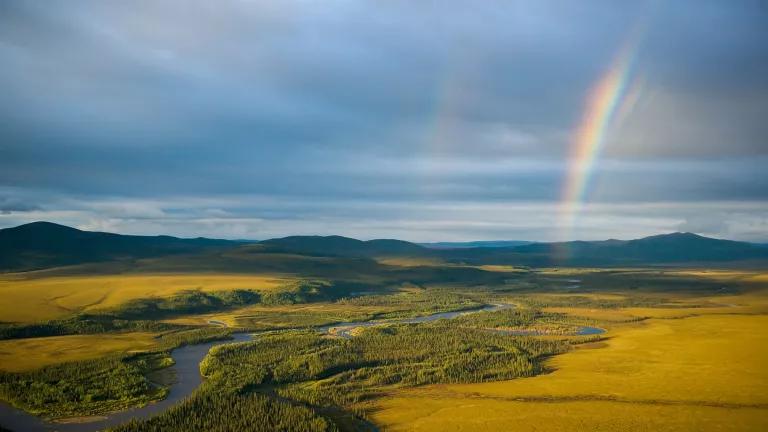
Co-authored with Kathryn Dunn, Program Assistant, Santa Monica.
As January came to a close, NRDC and Defenders of Wildlife advocates presented in the Sacramento Capitol on the looming biodiversity crisis. These experts emphasized that protecting species and natural ecosystems is essential to our future. The biodiversity crisis impacts California species, and the state is positioned to play a vital role in efforts to solve this existential threat.
The United Nations recent biodiversity report, which our colleagues Susan Casey-Lefkowitz and Lauren Kubiak have reported about, paints a bleak picture of sweeping human impacts on species around the globe. 1 million species are at risk of extinction with more than 500,000 out of these considered “dead species walking”—in other words, they are sure to go extinct unless drastic measures are taken to conserve them and restore their habitat. Many classes of creatures—including birds, fish, mammals, insects, amphibians, and reptiles—have suffered double-digit population declines in the past fifty years. These declines are only expected to continue, unless lawmakers and regulators take decisive and transformative action.
California is a biodiversity hot spot, and yet the wild creatures and wild lands unique to the state are in trouble. Native species in California have declined by 20 percent, and over 600 California species are at risk of extinction. California has lost more than 1 million acres of natural area in the last twenty years—only Kansas, North Dakota, Oklahoma, and Texas have destroyed more natural lands (Center for American Progress). This devastation has wrecked many ecosystems. The state has lost 90 percent of our coastal wetlands and inland wetlands, 99 percent of our riparian areas, and most of our native grasslands.
California is also a critical nexus for the biodiversity loss taking place in our oceans. As Sandy Aylesworth and Irene Gutierrez have blogged about, illegal, unreported, and unregulated fishing (IUU fishing for short), is a key factor in the pillaging of ocean resources. The United States has the unique power to disincentivize IUU fishing practices by closing its markets to IUU seafood. The U.S. has an insatiable appetite for seafood—it is the largest seafood market in the world, importing between 60 and 90 percent of its seafood. Researchers estimate that some 30 percent of the wild-caught fish entering the United States is caught through IUU methods. A significant amount of this fish comes in through California ports—we receive roughly 30 percent of the nation’s seafood imports—putting the state on the frontline of the fight against illegal seafood trade. In addition to depleting natural resources, this illegal trade grossly distorts the seafood market, hurting honest fishermen, including those on the West Coast.
In its biodiversity report, the United Nations calls out human exploitation—activities such as logging, mining, and fishing—as leading drivers of biodiversity loss. The solutions experts presented at the Sacramento legislative briefing aim to tackle this driver of biodiversity loss.
On the land side, among the California-focused solutions experts discussed were: setting out a “30 by 30” goal for oceans and land—including fresh water ecosystems—to prioritize conservation and sustainable management of these resources, prioritizing conservation of natural and working lands and waters as key components of our climate resilience and greenhouse gas reduction policies, advancing the “California Biodiversity Initiative” with elements launched by Governors Brown and Newsom, introducing potential bills to prevent illegal trade in wildlife, and supporting bonds as methods of directing additional necessary funds to the natural resource agencies protecting wild lands and wild life.
On the oceans side, experts discussed the need to: direct additional resources to state agencies like the California Department of Fish and Wildlife, increase the detection and intervention of illegal fishing and illegal seafood shipments, reform fishery management practices to promote more sustainable fishing and enable better detection of problematic fishing, enhance seafood labeling requirements to better inform California consumers, reform state laws (like the California Transparency in Supply Chains Act), and require ethical seafood supply chain practices.
To effectively resolve the biodiversity crisis, transformative change is needed. California has the ability and responsibility to be a leader on reversing biodiversity loss. Educating Sacramento lawmakers about this global crisis is an important step toward the sweeping, multidimensional change necessary to protect our planet from this crisis.
This blog provides general information, not legal advice. If you need legal help, please consult a lawyer in your state.



